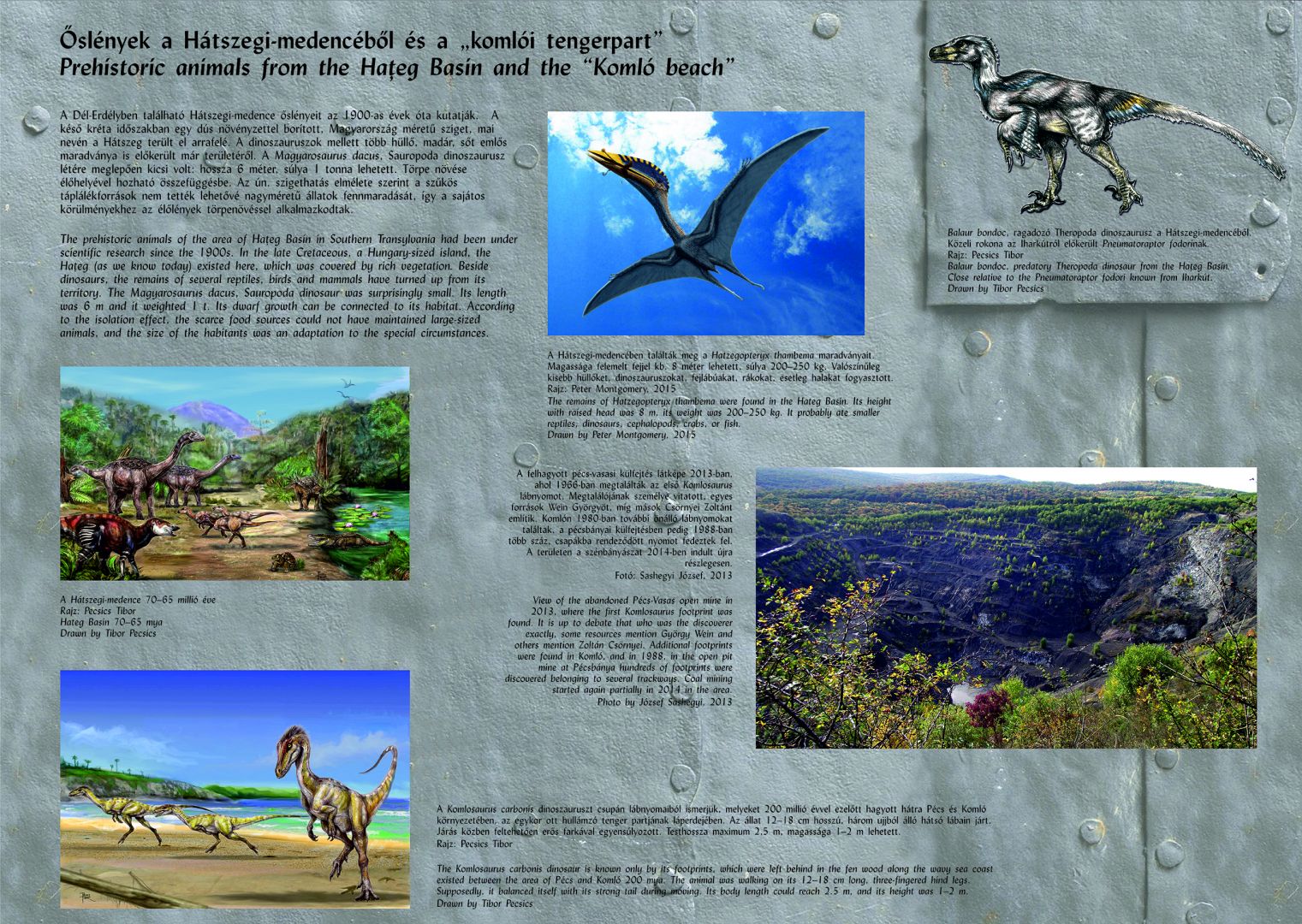HUGARIAN DINOSAUR RESEARCH - 2. view
Prehistoric animals from the Hateg Basin and the “Komló beach”
The area of the Hateg-basin in Southern Transylvania had been under scientific research since the 1900s. Beside dinosaurs, the remains of several reptiles, birds and mammals have turned up here. The Magyarosaurus dacus, Sauropoda dinosaur was surprisingly small. Its length was 6 m and it weighted 1 t. Its dwarf growth can be connected to its habitat. In the late Cretaceous, a Hungary-sized island, the Hateg existed here, which was covered by rich vegetation. According to the isolation effect, the scarce food source could not have maintained large-sized animals, and the size of the habitants was an adaptation to it.
Hateg Basin 70–65 mya. Drawn by Tibor Pecsics
The remains of Hatzegopteryx thambema were found in the Hateg Basin. Its height with raised head was 8 m, its weight was 200–250 kg. It probably ate smaller reptiles, dinosaurs, cephalopods, crabs, or fish. Drawn by Peter Montgomery, 2015
Balaur bondoc, predatory Theropoda dinosaur from the Hateg Basin. Close relative to the Pneumatoraptor fodori known from Iharkút. Drawn by Tibor Pecsics
The Komlosaurus carbonis dinosaur is known only by its footprints, which were left behind in the fen wood along the wavy sea coast existed between the area of Pécs and Komló 200 mya. The animal was walking on its 12–18 cm long, three-fingered hind legs. Supposedly, it balanced itself with its strong tail during moving. Its body length could reach 2.5 m, and its height was 1–2 m.
Komlosaurus carbonis
Drawn by Tibor Pecsics
View of the abandoned Pécs-Vasas open mine in 2013, where the first Komlosaurus footprint was found. It is up to debate that who was the discoverer exactly, some resources mention György Wein and others mention Zoltán Csörnyei. Coal mining started again partially in 2014 in the area. Additional footprints were found in Komló, and in 1988, in the open pit mine at Pécsbánya hundreds of footprints were discovered belonging to several trackways. Photo by József Sashegyi, 2013
